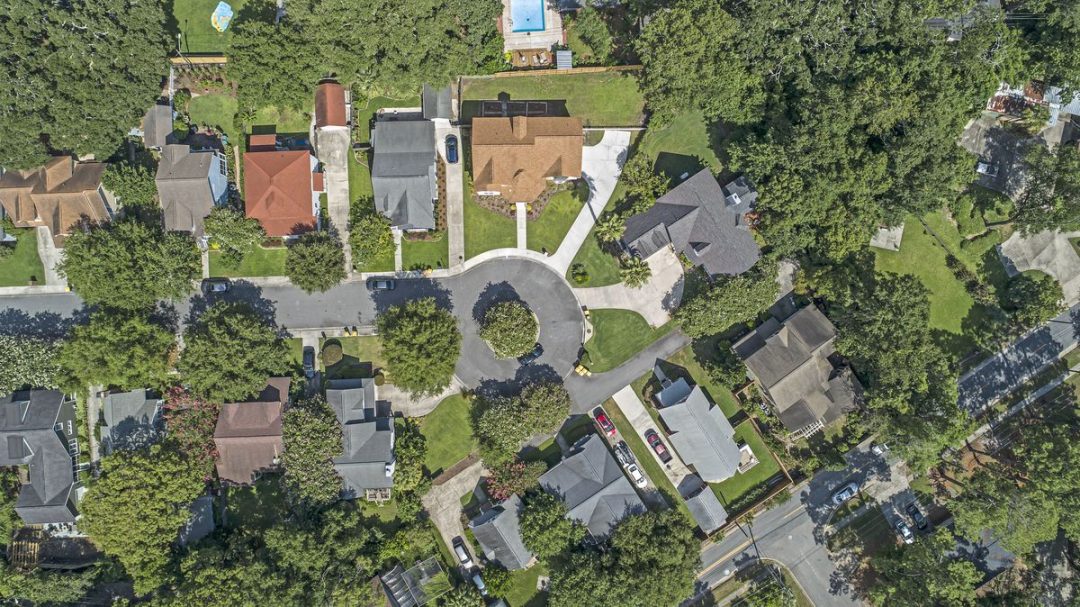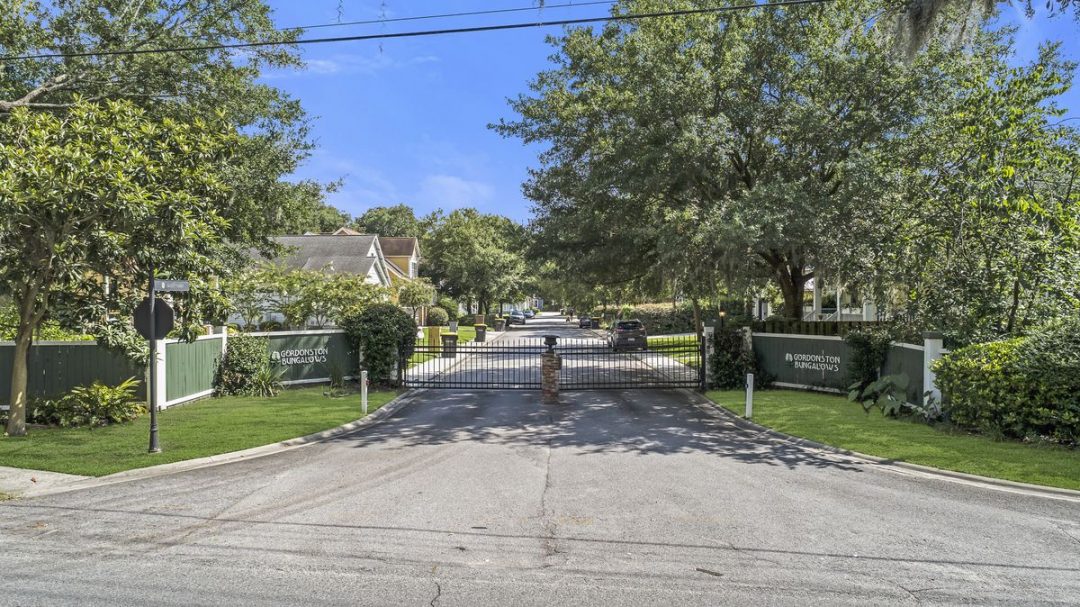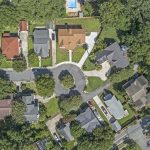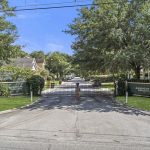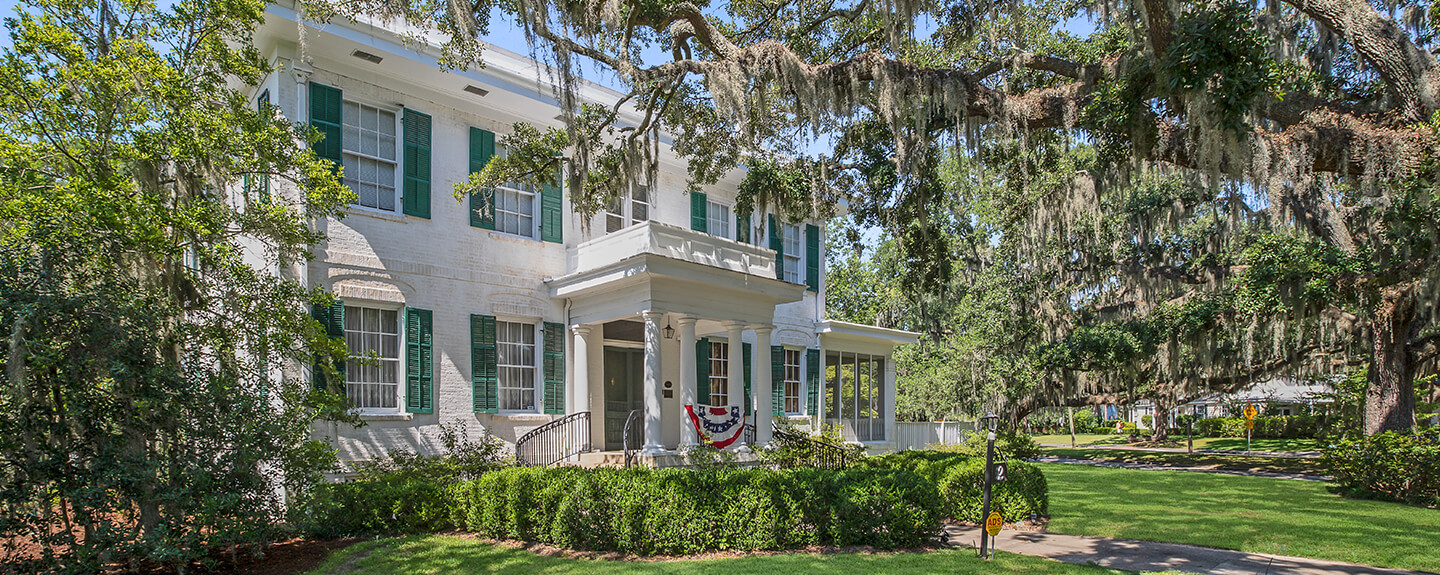
GORDONSTON
In May of 1917, advertisements appeared for a new residential development east of downtown Savannah described as, “high and dry, very healthy, strictly suburban… no smoke or turmoil, an 80-acre residential park.” This new area came to be known as Gordonston in honor of the developer William Washington Gordonston III. This 80-acre tract of land is said to be the highest ground in Savannah and was inherited by Gordon, whose family was earlier responsible for the establishment of the Central of Georgia Railroad.
The Thunderbolt Streetcar line passed through Gordonston and continued until 1946 when it was replaced with bus service. The ten-minute trip from downtown to Gordonston was a convenience that undoubtedly added to the attractiveness of the development.
Like Ardsley Park/Chatham Crescent, Gordonston was influenced by the City Beautiful School of Urban Planning, which placed an emphasis on public space, native plantings, and curvilinear streets. Gordonston features a radial plan with streets emanating like spokes of a wheel from Pierpont Circle. These streets include Atkinson, Pierpont, and Henry. The neighborhood is in the shape of a triangle whose top is bisected by Kinzie Avenue, the street which carried the all important streetcar lines.
“Its historic character, strong neighborhood association, beautiful parks, and many other features make it one of Savannah’s preeminent neighborhoods”
Gordonston features two beautiful parks. The axial center of the neighborhood, Pierpont Circle, is landscaped and maintained by the Gordonston Neighborhood Association. The other park is named for Juliette Gordon Low, the founder of the Girl Scouts of America. This private park has a distinct natural character and contains a cabin donated to the Girl Scouts by Union Camp Corporation. Girl Scout meetings have been held in this cabin for generations. The Gordonston Association, who owns and operates the park, now manages this cabin. The park is enclosed by an iron fence and originally had a pair of ornate iron gates made by Juliette Gordon Low herself. They were removed after an incident of vandalism and have been replaced by replicas.
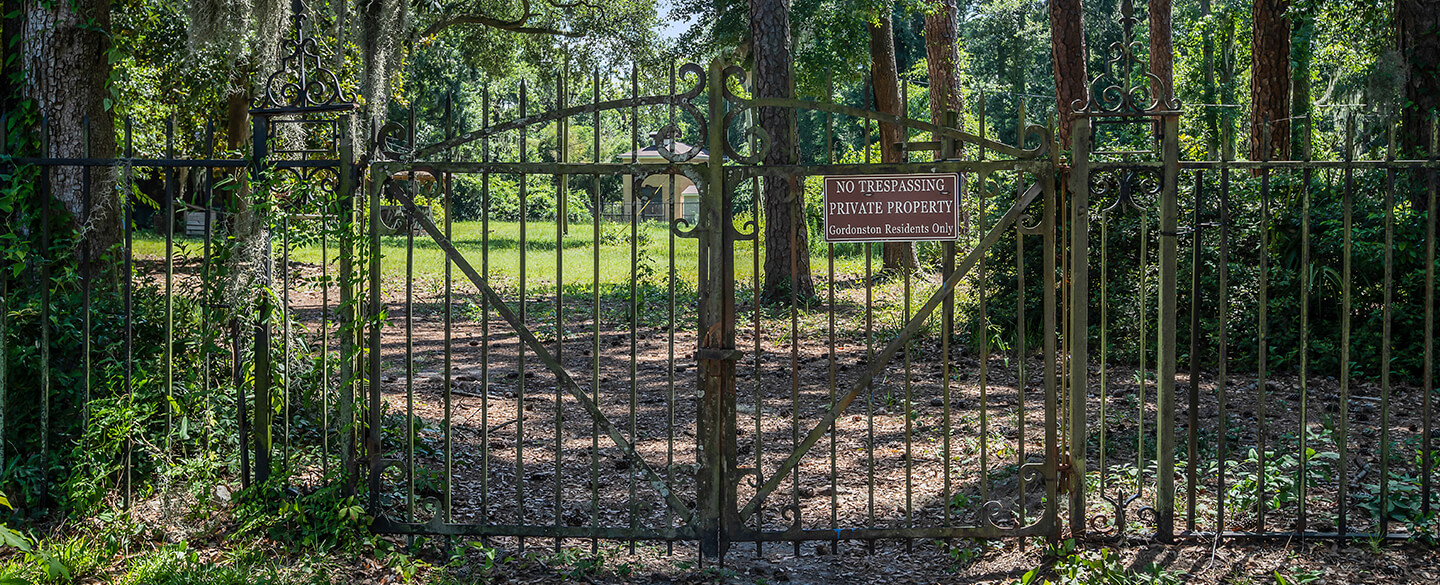
In addition to the green space provided by the parks, Gordonston features a beautiful and mature landscape. Kinzie and Atkinson Avenues both have landscape medians and shade trees. Lanes and streets feature live oaks, crape myrtles, magnolias, palmettos, camellias, azaleas, and many other varieties of traditional southern plantings.
The earliest houses of Gordonston were built on Kinzie and Gordonston Avenues from 1917 through the 1920s. These houses are Craftsman Style bungalows. Later in the neighborhood’s development, larger houses in the Colonial Revival Style were created. Construction continued in the 1940s and 1950s when the neighborhood filled up with early Ranch-style houses. There are 109 contributing buildings in the Gordonston Historic District, and 85 listed as non-contributing to the neighborhood; however, the vast majority of the latter are compatible with the architectural character of the district. Other styles of architecture in Gordonston are Tudor Revival, Arts and Crafts, and Mission Revival. Noted Savannah architects left their mark on Gordonston. They are E. Lynn Drummond, Olaf Otto, Henrik Wallin, Abraham Anson Artley, Eugene K. Cashman, and John LeBey.
There is one institutional building in the neighborhood- the Moore Avenue Elementary School, built in 1942 and designed by Levy and Clarke. It is now known as the Herty School and is currently being rehabilitated as condominiums.
Gordonston remains to this day a quiet and secluded suburb, one that represents the best of an important trend in American land development during the twentieth century. Its historic character, strong neighborhood association, beautiful parks, and many other features make it one of Savannah’s preeminent neighborhoods.
